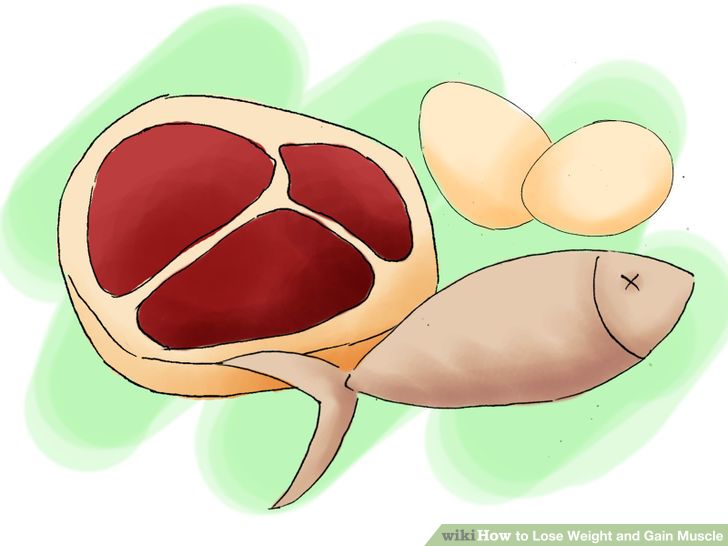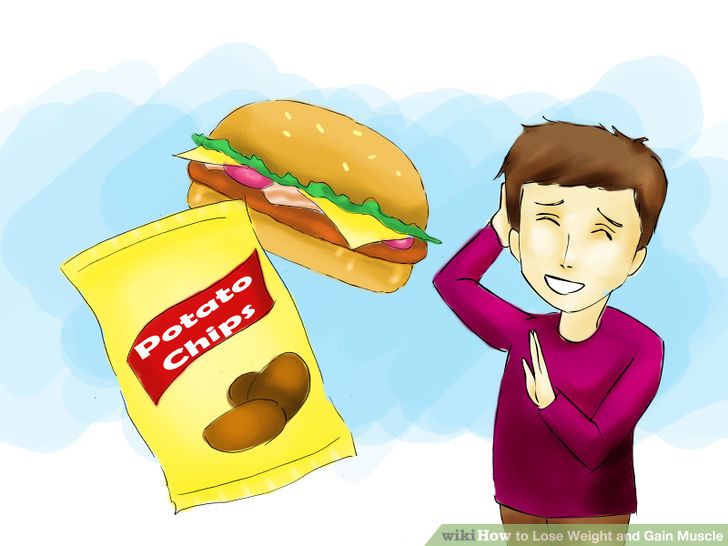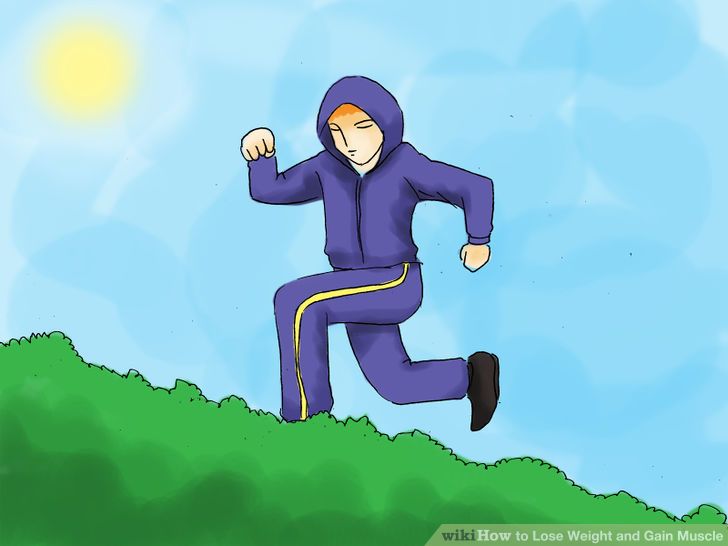1 Eat more protein.
Protein is vital to building muscle. While strength training, your body enters a catabolic state in which it starts to break down muscle. Consuming protein after a workout helps put your body back into an anabolic state so that it can start to rebuild muscle. Here are some examples of high-protein foods that you should incorporate into your diet:[1]
Lean Beef. Beef not only contains approximately 25% protein (about 7 grams per ounce), it’s also a good source of vitamin B12 as well as zinc and iron.
Chicken. Skinless chicken contains approximately the same protein content as beef and is a very versatile food.
Fish. Fish is as good of a protein source as beef and chicken, but fish like tuna and salmon are also great sources of essential fatty acids (EFAs) and Omega 3s which have far reaching health benefits including boosting your immune system.
Eggs. Aside from being high in protein, eggs are also another good source of Omega 3s.
Beans. Beans are a tremendous source of protein (the precise amount varies from bean to bean), but more than that, they’re also terrific sources of fiber. This means that with beans, you’ll feel fuller faster and stay satisfied longer.

2 Limit your carbs.
It’s true that limiting carbs can result in weight loss, but carbohydrates are not the enemy. If used properly, carbs are an integral part of your diet and workout routine. Not only do they help your body absorb the protein you’re putting in, but carbs also give your body the fuel it needs to work out in the first place. Here are some carbohydrate-rich foods you should work into your diet:
Whole grains. Keep this in mind when shopping for bread, pasta, and rice. Whole grains are not only a good source of carbohydrates, but have been linked to lowering the risk of high blood pressure and type 2 diabetes.
Oatmeal. Aside from being a whole grain and having the benefits listed above, oatmeal is full of fiber and will keep you feeling full longer than sugar-filled sweets, limiting your desire to snack as much before lunch or overcompensate with a bigger meal.
Spaghetti squash. Try this as an alternative to pasta if you want to limit your carbs. Spaghetti squash, when cooked properly not only resembles the familiar pasta, but it only contains about one quarter of the carbs.
3 Balance your calories.
Your caloric intake will play a crucial role in your ability to shed fat and build muscle. Taking in too many calories will lead to unwanted weight-gain; taking in too few calories will make it almost impossible to build lean muscle.
You should be taking in somewhere between 10-15 times your body weight in calories every day. This may seem like a lot, but remember that you’ll be burning a lot of calories in your workouts.
Note: these numbers may vary depending on a number of factors such as height, age and gender. Use an online calorie calculator, or download an app capable of doing this for you; there are many free tools available.
Consulting a physician is recommended before making any drastic changes to your diet.

4 Avoid processed foods.
Processed foods are the enemy. They are high in additives and low in nutrients and have had a great deal of their vitamins, minerals and fiber stripped away. To make things worse, unhealthy fats, artificial sweeteners, and synthetic vitamins and minerals are typically added in after the fact. In most cases, your body doesn’t even recognize these ingredients as food! Here are examples of processed foods to avoid:[4]
Lunch meats
Hot dogs
Packaged chips and cookies
Frozen pizzas and frozen dinners.
5 Make cardio part of your routine.
Cardiovascular exercise is integral to losing weight as it helps you burn fat and increase your heart rate, thereby strengthening it. A strong, healthy heart effectively pumps oxygen throughout the body, and to your muscles, aiding in strengthening and toning. You should look to integrate cardio into your routine about 4 days a week, and should plan on spending about 30 minutes to get the most out of it.


